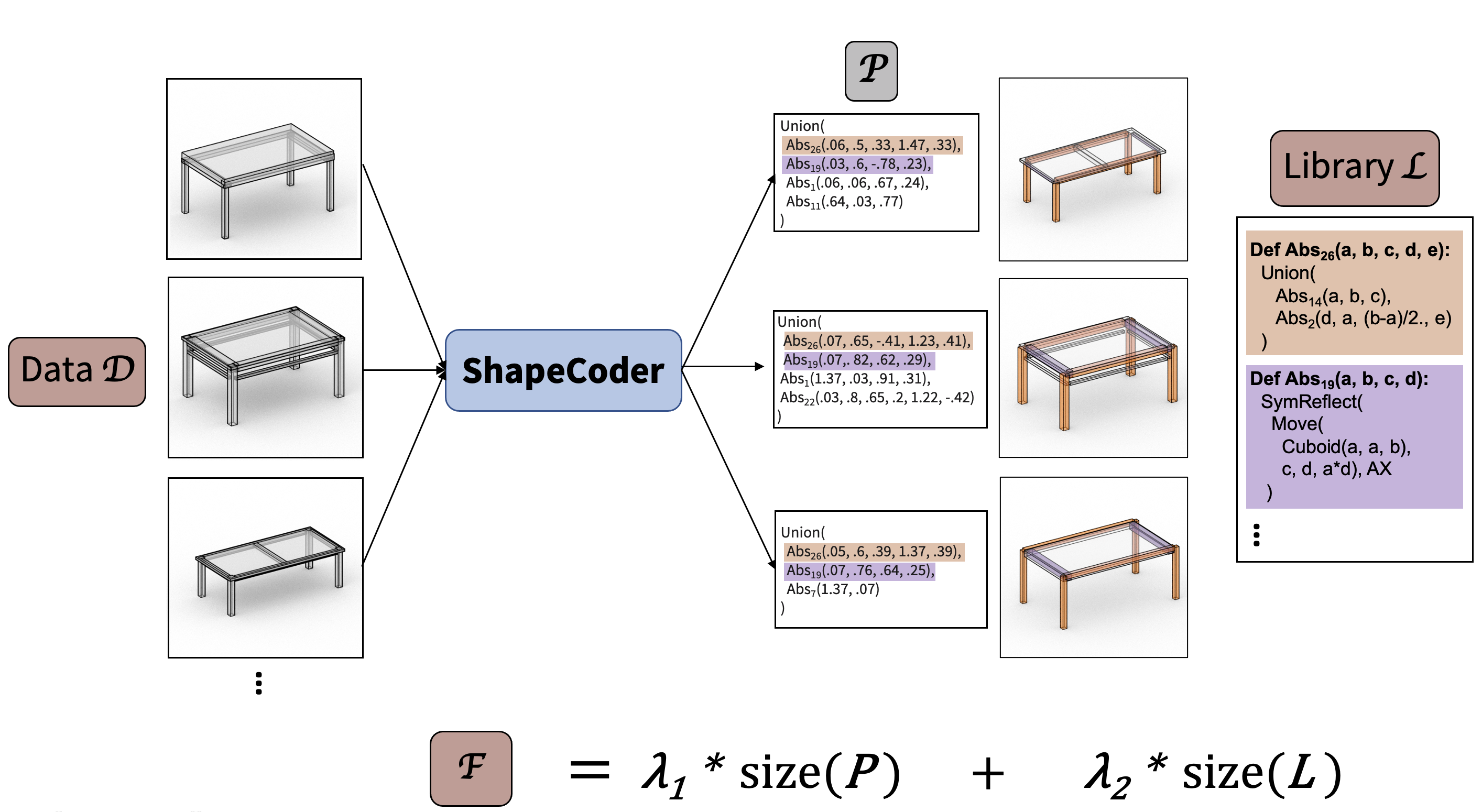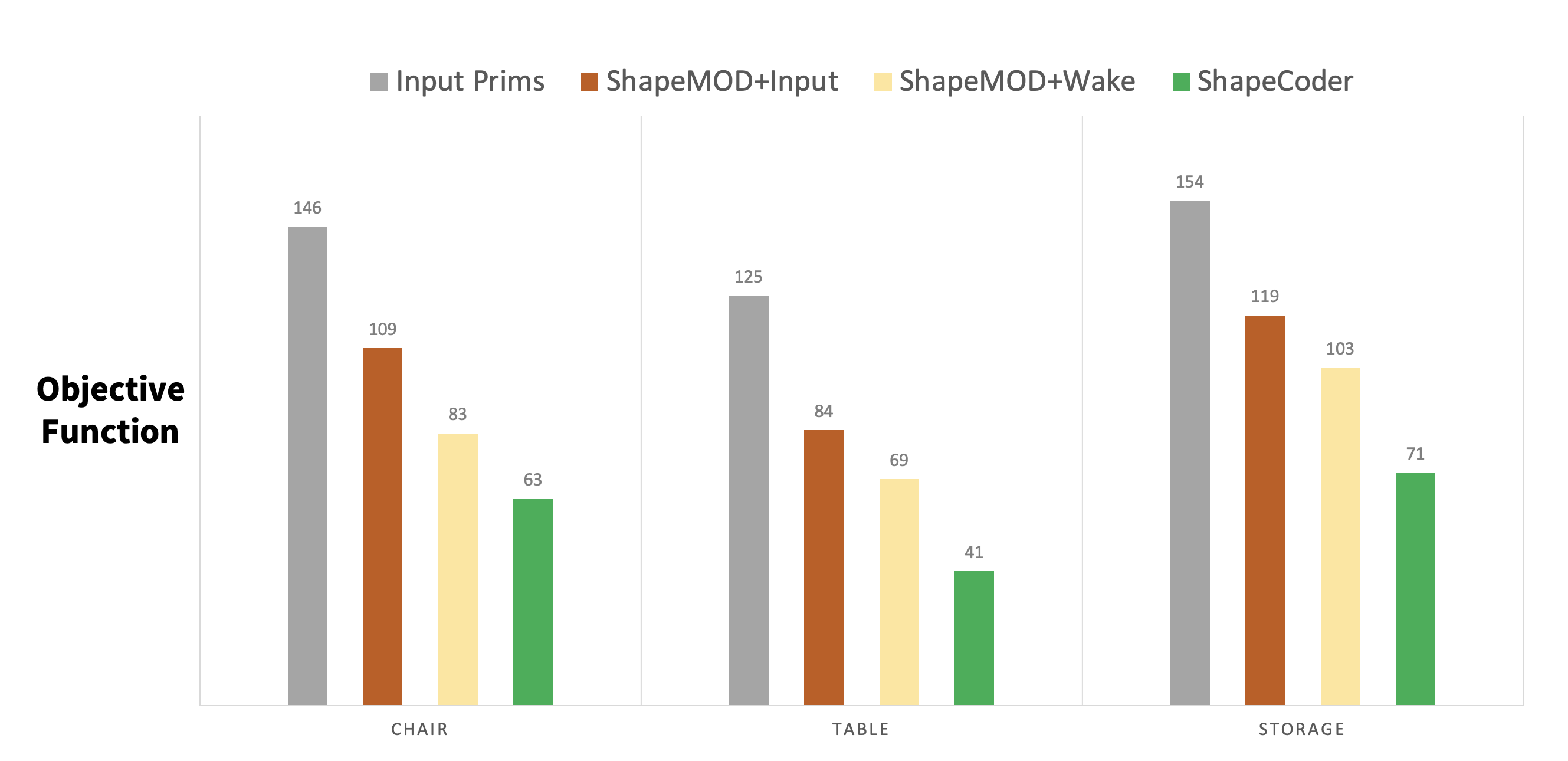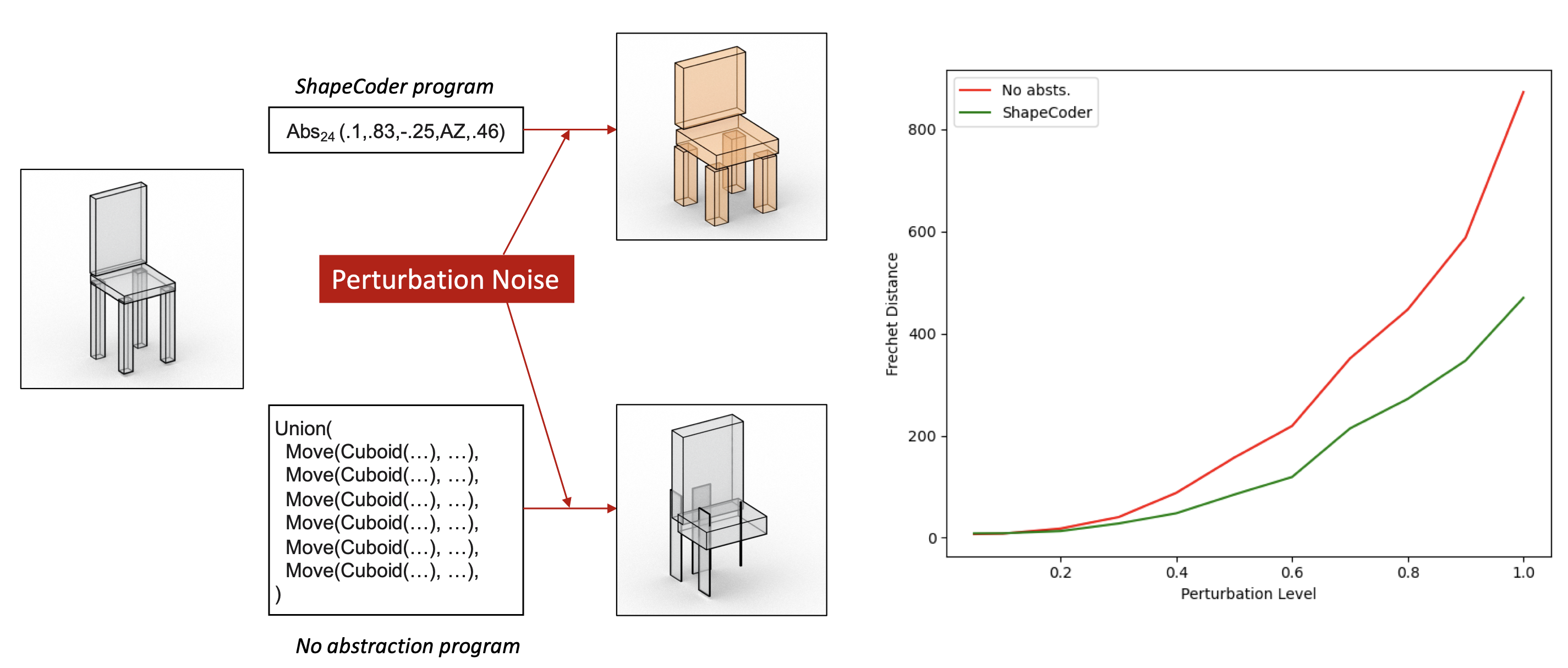
| R. Kenny Jones1 Paul Guerrero2 Niloy J. Mitra2,3 Daniel Ritchie1 |
| 1Brown University 2Adobe Research 3University College London |

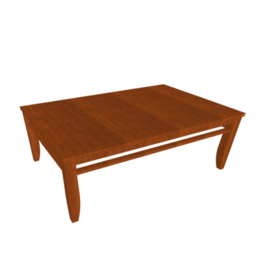
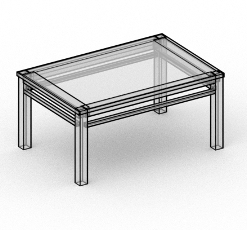

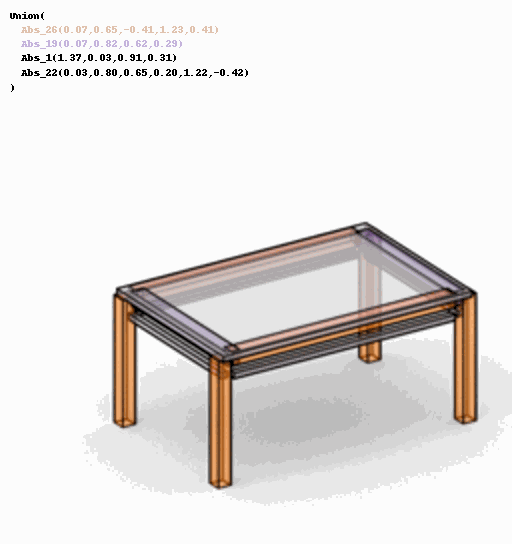
@article{jones2023ShapeCoder,
author = {Jones, R. Kenny and Guerrero, Paul and Mitra, Niloy J. and Ritchie, Daniel},
title = {ShapeCoder: Discovering Abstractions for Visual Programs from Unstructured Primitives},
year = {2023},
issue_date = {August 2023},
address = {New York, NY, USA},
volume = {42},
number = {4},
journal={ACM Transactions on Graphics (TOG), Siggraph 2023},
articleno = {49},
}
